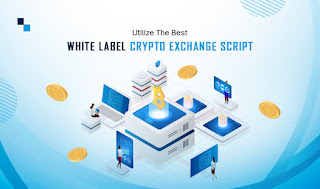How to Launch a Crypto Exchange For Institutional Investors in Switzerland?
Introduction
Switzerland, home to the world’s most prominent international financial institutions, including the World Trade Organization (WTO) and the Bank for International Settlements (BIS), has long advocated for digital finance. The progressive finance hub also accommodates leading blockchain ecosystems and opens doors for crypto-based innovations, making it one of the best places to launch your cryptocurrency exchange software.
If you are a business, asset manager, or tech entrepreneur planning a future-proof cryptocurrency exchange development, this guide will help you not just build but successfully launch a compliant, scalable, and institutional-grade platform.
Why Launch Your Institutional-Grade Crypto Exchange Software in Switzerland?
The crypto-friendly nation also emerges as a top destination for institutional crypto activity. Here’s why it becomes the hotspot for exchanges, funds, and infrastructure providers looking to serve high-volume players.
- Consistent regulatory clarity (thanks to FINMA’s uniform compliance approach)
- Transparent tax policies designed for digital assets
- Established crypto banks like SEBA and Sygnum cater to institutional needs
- Legal recognition of digital assets under the DLT framework
- Robust data privacy laws that protect investor confidentiality
- A thriving innovation hub with 1000+ blockchain firms, VCs, and legal experts
- Access to insured, regulated custody providers
- Giants like Union Bank of Switzerland are actively exploring blockchain and tokenization
- Prominent crypto companies such as Ethereum, Tezos, and Solana are headquartered in Switzerland.
- Cross-border compliance alignment with EU, US, and APAC standards
- A fast-growing market projected to hit USD 466.6M by 2026 (4.59% CAGR)
- A skyrocketing user base, expected to reach 4.03M users by 2026 (increasing by 44.68%)

Source: CCN
These factors make Switzerland strategically ideal for launching a crypto exchange focused on institutional-grade services.
Step-by-Step Process to Cryptocurrency Exchange Development Targeting Institutional Investors
Cryptocurrency exchange development requires extensive effort and resources, and if you’re talking about a country with more than an 11.5% crypto adoption rate and building for institutions, it requires far beyond code and servers. Let’s see what it takes to build a crypto exchange for institutional use:
1. Market Research
Even before you pick a cryptocurrency exchange development company, you’d need to assess the competitor landscape, demand, and investor behavior in Switzerland. Carefully examine where your target audience is going to trade and store their digital assets. Now, diligently study your competitors, what they’re doin,g and what you can do to enhance investor experience.
2. Business Model Design
As per your market analysis, business goals, and constraints, you’ll decide whether you want to offer spot, derivatives, tokenized asset trading, etc. You can choose to launch in phases with an MVP in the early phases and then upgrade later on with more features, including staking, custody, etc.
3. Technology Partner Selection
Now, after you’re done deciding what to build, you can pick the best cryptocurrency exchange development company based on their proven expertise, experience, reviews, etc. Prefer one with experience in institutional-grade architecture, order books, KYC modules, etc.
4. UI/UX Prototyping
When it comes to building for institutional investors, you must build data-dense dashboards, advanced order management and access control interfaces, customizable workspaces with minimalistic color schemes, fast, zero-lag experience, audit and compliance views, etc. Also, since institutional traders use 2-6 monitors and prefer detailed reporting tools (exportable logs, tax reports, trade summaries, and performance breakdowns), your crypto exchange platform development must be built accordingly.
5. Platform Development
When it comes to cryptocurrency exchange software development, institutional traders don’t care about bells and whistles. All they want is trustworthy infrastructure, actionable data, configurability, and compliance-ready tooling.
- Backend (low-latency matching engine, reliable and scalable API access, wallet architecture built for custody and compliance, risk management, advanced access controls, built-in compliance)
- Frontend (configurable trading dashboard, advanced order types interface, live risk and exposure panel, role-based views, real-time reporting, mobile access)

6. Liquidity Planning
To make trading smooth for institutional investors, you need more than just liquidity and market makers. You’ll need to collaborate with your cryptocurrency exchange development company to plan and arrange the following:
- Deep liquidity with tight bid-ask spreads
- Slippage control for large-volume orders
- Smart order routing (TWAP, VWAP, iceberg)
- Sub-100-ms latency matching engine
- Support for advanced order types (OCO, bracket, trailing stop)
- Real-time risk and margin monitoring
- Auto-liquidation safeguards and exposure limits
- High-throughput FIX and WebSocket APIs
- Failover-ready infrastructure with 99.99% uptime
- Dedicated account support and live issue resolution
- Liquidity incentives (maker rebates, volume tiers)
- Volatility controls and circuit breakers




Comments
Post a Comment